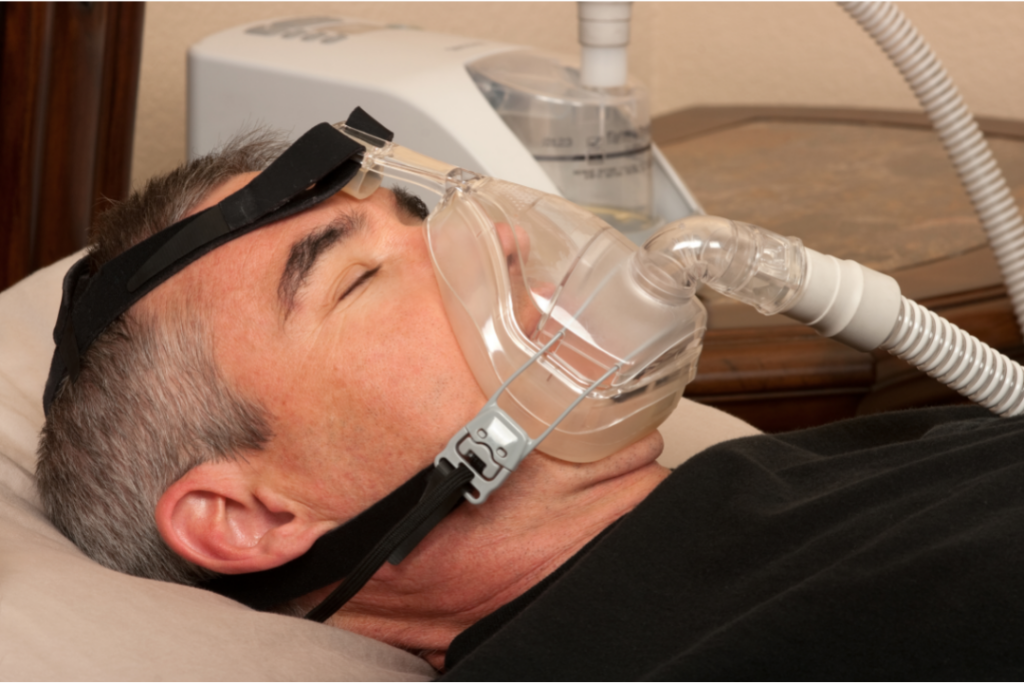For individuals living with sleep apnea, choosing the right therapy device can be overwhelming. Two of the most common options prescribed by sleep medicine specialists are CPAP (Continuous Positive Airway Pressure) and BiPAP (Bilevel Positive Airway Pressure) machines. Understanding their differences, benefits, and appropriate use is crucial to maintaining sleep quality, protecting heart health, and avoiding complications associated with untreated sleep apnea.
In this guide, we break down CPAP vs. BiPAP, explain how each works, and provide practical advice for selecting the right therapy for your needs.
What Is CPAP Therapy?
CPAP therapy is the most commonly prescribed treatment for obstructive sleep apnea. It delivers a continuous stream of air through a mask, keeping the airway open throughout the night.
See more: The Silent Night Disruptor: How Sleep Apnea Impacts Your Health and Daily Life
How CPAP Helps
- Prevents airway collapse during sleep
- Maintains consistent oxygen levels
- Improves sleep quality and reduces daytime fatigue
Example: John, a 50-year-old accountant, struggled with loud snoring and morning headaches. After starting CPAP therapy, his breathing stabilized, he felt more energetic during the day, and his blood pressure improved.
Simple Explanation: CPAP machines maintain constant air pressure, preventing interruptions in breathing that lead to low oxygen levels and heart strain.
What Is BiPAP Therapy?
BiPAP therapy works similarly to CPAP but delivers two levels of pressure:
- Higher pressure when inhaling
- Lower pressure when exhaling
This difference makes BiPAP easier for patients who struggle to exhale against constant CPAP pressure, especially those with central sleep apnea or certain lung conditions.
Benefits of BiPAP
- Easier, more comfortable breathing
- Adjustable pressure settings for inhalation and exhalation
- Often used for patients with complex sleep disorders or higher pressure needs
Example: Maria, a 62-year-old with chronic obstructive pulmonary disease (COPD), found CPAP therapy uncomfortable. Switching to BiPAP provided relief and improved her oxygen saturation overnight.
Key Differences Between CPAP and BiPAP
| Feature | CPAP | BiPAP |
|---|---|---|
| Air Pressure | Continuous | Dual (inhale/exhale) |
| Ideal For | Obstructive sleep apnea | Central or complex sleep apnea, COPD |
| Comfort | Some find exhaling difficult | Easier to exhale, more comfortable for high pressures |
| Cost | Generally lower | Slightly higher due to complexity |
| Settings | One pressure setting | Two adjustable pressures |
How These Devices Improve Sleep and Heart Health
Untreated sleep apnea can cause:

- Low oxygen levels at night
- Increased heart rate and blood pressure
- Risk of heart disease, stroke, and fatigue
Both CPAP and BiPAP:
- Keep airways open
- Prevent oxygen deprivation
- Reduce strain on the cardiovascular system
- Improve overall sleep health
Medical Explanation (Simple): Every apnea episode lowers oxygen in the blood, forcing the heart to work harder. CPAP and BiPAP restore normal breathing, keeping oxygen levels stable and protecting the heart.
Practical Tips for Using CPAP or BiPAP
1. Proper Mask Fit
- Ensure your mask is snug but comfortable
- Try different styles (nasal, full-face, nasal pillows)
2. Gradual Adjustment
- Start with shorter sessions to get used to pressure
- Use during naps initially if overnight therapy feels challenging
3. Machine Setup and Maintenance
- Clean tubing, mask, and humidifiers regularly
- Replace filters as recommended by your device manufacturer
4. Travel Tips
- Bring your machine in carry-on luggage
- Carry a doctor’s note for security screening
- Consider travel-friendly CPAP or BiPAP models
Working With Sleep Studies and Specialists
Before starting therapy, a sleep study identifies the type and severity of your sleep apnea. A specialist will:
- Recommend CPAP or BiPAP based on your diagnosis
- Adjust pressure settings for maximum comfort and effectiveness
- Monitor progress and make adjustments if needed
Example: Paul, a 48-year-old truck driver, underwent a sleep study that showed obstructive sleep apnea with high-pressure requirements. Switching from CPAP to BiPAP significantly improved his compliance and reduced daytime fatigue.
Choosing Between CPAP and BiPAP
- CPAP: Best for most cases of obstructive sleep apnea
- BiPAP: Recommended for central sleep apnea, higher pressure needs, or difficulty tolerating CPAP
Consult a sleep medicine specialist for personalized recommendations. Proper selection and consistent therapy use are essential for protecting heart health and achieving restorative sleep quality.
Conclusion
Both CPAP and BiPAP machines play vital roles in sleep apnea treatments. Understanding their differences allows patients to select the right device, maintain consistent therapy, and prevent complications such as heart disease, fatigue, and high blood pressure. By combining proper device use with lifestyle adjustments and regular sleep monitoring, individuals can enjoy healthy sleep and better overall wellness.
